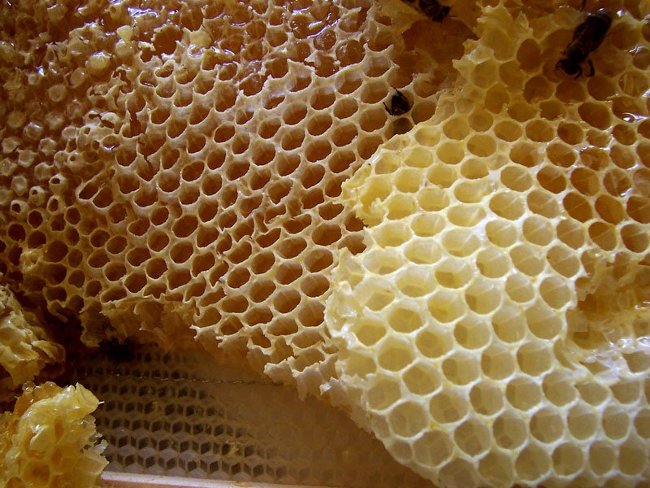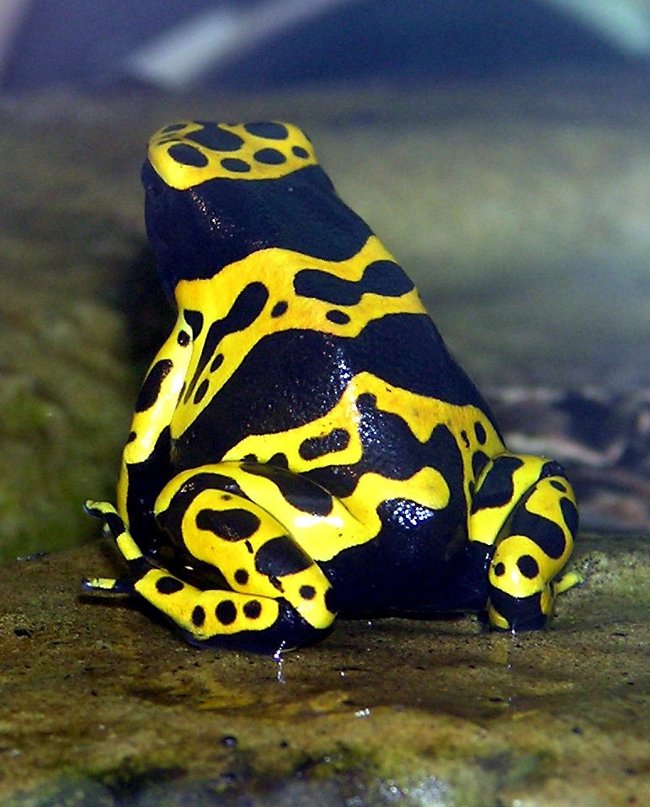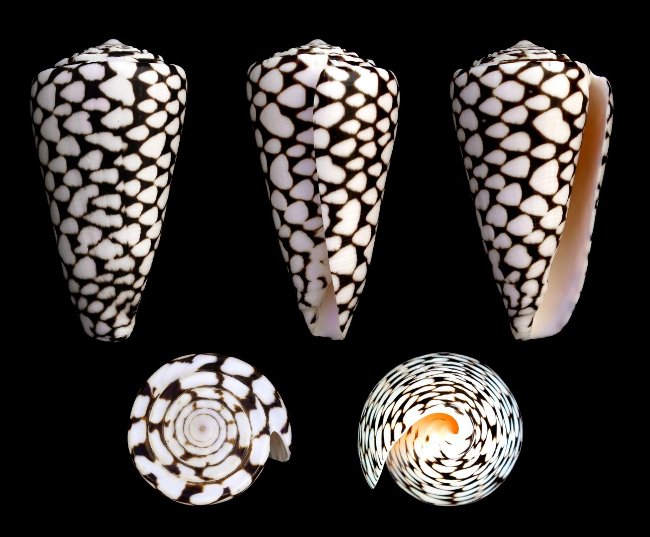Science is still finding the mystery behind 'hole-fear syndrome - trypophobia'
- Top 10 mysterious psychosis syndrome that the human brain can afford
- 8 facts about male bodies that they themselves do not know
- 20 things to remember if you are in love with a person with an incompetent disorder (ADD)
Surely many of us have heard about trypophobia syndrome , also known as a fear of hole syndrome , right? This syndrome causes a chilling feeling whenever you see similar holes, spots or shapes gathered together. However, many scientists still do not recognize this as a form of psychological illness. Why? Let us find out the mystery behind this "trypophobia" .
- The holes, bumps, spots and similar shapes make some people feel frightened.
- About 15% -17% of people suffering from the syndrome are afraid of holes.
- Trypophobia is an unrecognized form of psychological disorder, which is when you have a feeling of goosebumps, a feeling of horror, obsession, fear, nausea, dizziness when you see images with many round holes or groups of Round holes, such as honeycomb, lotus bowl, perforated hole in the trunk, hole tattoos on the human body .
- Many researchers agree that the syndrome of phobia - trypophobia syndrome is derived from the human brain, not from the fear formed in evolution.
Before continuing to read this article, answer the question: Does the lotus bud picture below make you goosebumps? If your body and mind start to react badly, it's better not to continue rolling.
Previous research has shown that about 18% of women and 11% of men ( about 15% of the general population ) - feel uncomfortable after looking at images with holes or marks, according to a condition study. This is called trypophobia - fear of hole syndrome .
These cavity holes are usually natural and quite diverse, it can come from genres that make you shudder like the back of a toad surinam, until the holes that are often found everyday like honeycomb or bubbles soap.
A 2013 study report by the journal Psychological Science cited the horrific feeling of a person in the face of such images: " I can't really face irregular, asymmetric, small holes. they make me feel confused, upset, want to cry and shudder ".
 The image of lotus buds can cause disgust for those who have experienced anorexia syndrome.Image source: 3Point141 / Wikipedia (CC BY-SA 4.0)
The image of lotus buds can cause disgust for those who have experienced anorexia syndrome.Image source: 3Point141 / Wikipedia (CC BY-SA 4.0)
Although trypophobia syndrome is called a " hole fear ", but when scientists learn more about the syndrome, they realize that this is not just a feeling of fear, nor is it afraid of holes. it is a feeling of goosebumps, horror, phobia, fear, nausea, dizziness when you see images of round holes or groups of round holes. However, this syndrome is not recognized by psychological communities. The reason is because this syndrome has no signs of a typical obsession that psychologists can diagnose.
" Trypophobia is more annoying than this fear and discomfort is clearly an overreaction, " said Arnold Wilkins , an Essex psychologist who replied via an email to Tech Insider. This disgust comes from groups of objects and these objects are not necessarily holes, even though the name of this syndrome is a fistula . "
This is a complicated issue and scientists like psychologist Arnold Wilkins continue to study, quantify and try to explain trypophobia syndrome as well as find the source in the subconscious of humans.
Discomfort originates from survival?

Psychologist Arnold Wilkins and his research partner, Geoff Cole , all thought that this strange curiosity could have originated from biology. People are afraid of this formation because when we discover them in nature, they are somewhat frightening for us.
To identify this effect, the researchers analyzed images on trypophobia websites and images of holes that did not activate trypophobia syndrome to find differences.
Later, when conducting research on one of the people with trypophobia syndrome on the fear of blue-green octopus octopus, blue-spotted octopus, Geoff Cole realized that the reason lies in the evolutionary potential of fear of holes has a close relationship with dangerous and poisonous animals.
This is a blue round octopus , its venom is so strong that it can kill a person.
 Image of green octopus round
Image of green octopus round
To test the fear of formation associated with danger, the researchers collected 10 images of poisonous animals for analysis. These species include: boxy sea jellyfish, wild Brazilian spider, scorpion ( deathstalker scorpion) from the North Africa and Middle East , inland serpent snake, lord cobra, demon face fish and one number of other species.
A puffer fish has liver and skin containing venom . This is the second type of poisonous vertebrate in the world.

The poisonous frog species , like its name, contains a poisonous type that is as dangerous as pufferfish.

Marble cones can cause deadly stings.

The researchers analyzed their appearance and found that these poisonous animals have the same appearance as the irritating elements of the phobia syndrome. They claim that the ancient selection has forced us to stay away from these formidable poisonous animals and plants, as they may be related to trypophobia syndrome.
In a paper published in 2013, Geoff Cole once wrote: " This may be part of the evolution in the human brain in ancient times when they told them that they were seeing dangerous animals ." In other words, unpleasant feelings can lead to an evolutionary advantage, even people are not aware of that. Perhaps because of this, people with trypophobia syndrome want to avoid such holes as far as possible.
Scientist Geoff Cole also said: " We think everyone tends to have this syndrome even though they are not aware of it. We also found that people who don't have obsession still evaluate images related to 'uncomfortable' trypophobia syndrome over other images. "
However, in a recent study in April, the Psychological Reports published a question about the assertion that animal models of venom and fistula syndrome have a close relationship.

Researchers in China show images of venomous animals for 94 preschoolers, as well as images of trypophobia syndrome. They showed that this uncomfortable feeling for these offensive images ( trypophobia syndrome ) may be related to visual acuity , not a problem involving poisonous species . Trypophobia can be traced back to the ancient characteristics of humans and there is no answer, similar to the claw of a nail on a board.
Develop a trypophobia measure
A graduate of Wilkins, Anh An In Dinh Le used to experience terrible trypophobia syndrome, worked with psychologist Willins and Cole in the study of the fear of hole syndrome.
The group published a related study in 2014 on The Quarterly Journal of Experimental Psychology . In it, they developed a pre-measurement to better measure people's reactions to images of this syndrome. The researchers also analyzed images that stimulate trypophobia syndrome to understand exactly what led to unpleasant reactions.
They found that images that cause frightening syndrome contain characteristics that are different from nature in nature, generally as high contrast with low contrast in every detail. Wilkins said that when these images do not have the same natural characteristics, they will create a discomfort for the viewer.
For example, the lower image ( right hand side ) showing more contrast makes us see more details. For closer inspection, the researchers reduced the contrast of the details and we got the image on the left.
 Photo source: An Le / Tech Insider
Photo source: An Le / Tech Insider
However, there are actually similar visual characteristics that are associated with trypophobia syndrome, but do not cause this syndrome.
' Example model of stripes on escalator stripes, with unnatural spatial characteristics. Looking at these stripes is quite uncomfortable and may blur the eyes, but does not cause the trypophobia reaction , 'Wilkins said.
They also found that people with anorexia syndrome not only felt disgusted by the holes, but they also had negative reactions to the stains.

' They give the number of images related to the syndrome of phobia, in which, some images do not contain holes but other objects, the results show that the holes are clearly not the cause. The only cause of this syndrome. They found that the fear of losses did not reflect that situation, 'the researchers wrote in the report.
' Another research group in Colorado has also tried to quantify trypophobia reactions. They came up with the idea of a measure to monitor the body's automatic reactions. The results showed that when a person with anorexia syndrome looked at the offensive images, their heart rate increased and the fingers started sweating, 'according to a April 2017 study published in the journal. Releases Personality and Individual Differences .
Of the 37 college students, about 17% of them expressed fear as trypophobia syndrome.
' Although the fear of hole syndrome from the first time seems to be unreasonable, these images may cause a primitive threat detection system, ' the authors write.
But is it that the deep past of humans has led to the development of syndrome of fear of holes? Either way, scientists will continue to research to find a more accurate answer.
See also: The 25 interesting facts about HEART may not be known to you
Having fun!
You should read it
- The syndrome of 'dead butt', the nightmare of many people sitting
- Top 10 mysterious psychosis syndrome that the human brain can afford
- The 15-year-old girl lost her life because of her hair-eating syndrome
- What is Fomo? Psychological syndrome does not belong to anyone
- 20 things to remember if you are in love with a person with an incompetent disorder (ADD)
- Children with Tourette syndrome may have a language advantage
- The 5 most rare diseases in the world turn ordinary people into 'superheroes'
- Self-Sabotage and 'self-destructive' syndrome
May be interested
- The mystery behind the unique toy: 'Simpson goes to the bridge' is driving young people crazy
 no matter how boring, just plug the stick into the 'hole' of bart simpson's character simulation and light it, all the sadness will vanish.
no matter how boring, just plug the stick into the 'hole' of bart simpson's character simulation and light it, all the sadness will vanish. - The mysterious 'death dance' has no answer for 500 years
 singing and dancing are one of the most popular and favorite ways to entertain and share emotions ... in the world. but few people know that this seemingly harmless popular entertainment has caused a mysterious, traumatic event in history, challenging scientists for half a century.
singing and dancing are one of the most popular and favorite ways to entertain and share emotions ... in the world. but few people know that this seemingly harmless popular entertainment has caused a mysterious, traumatic event in history, challenging scientists for half a century. - New research confirms: The mystery of 'dark energy' may not exist
 the universe may not expand at an accelerated rate after that, meaning that the dark energy mystery may not really exist, according to a new study.
the universe may not expand at an accelerated rate after that, meaning that the dark energy mystery may not really exist, according to a new study. - Listen to the scary sound of a black hole 250 million light years from Earth announced by NASA
 sound waves cannot travel in a vacuum, so the universe cannot have sound. however, science can help us hear the universe in many ways.
sound waves cannot travel in a vacuum, so the universe cannot have sound. however, science can help us hear the universe in many ways. - Discover a monster black hole 100,000 times bigger than the Sun, the second largest in the Milky Way
 japanese astronomers discovered a supermassive black hole hidden in a cloud of suspended gas near the center of the milky way with a diameter of up to 1400 billion km and a mass of 100,000 times the sun.
japanese astronomers discovered a supermassive black hole hidden in a cloud of suspended gas near the center of the milky way with a diameter of up to 1400 billion km and a mass of 100,000 times the sun. - Discover the black hole closest to Earth, located in the star system that we can see with the naked eye
 if you stand in the southern hemisphere on a cold day, look up to the sky to find the black hole closest to you that science has discovered.
if you stand in the southern hemisphere on a cold day, look up to the sky to find the black hole closest to you that science has discovered. - What is Fomo? Psychological syndrome does not belong to anyone
 what is fomo? this psychological syndrome is dangerous. please read along to find the answer through the following article of network administrator.
what is fomo? this psychological syndrome is dangerous. please read along to find the answer through the following article of network administrator. - 10 interesting facts about black holes in the universe (Part 2)
 in the first part, we learned how a black hole grows, the number of supermassive black holes in the universe ... in this next section, we will learn some other interesting mysteries. about cosmic black holes.
in the first part, we learned how a black hole grows, the number of supermassive black holes in the universe ... in this next section, we will learn some other interesting mysteries. about cosmic black holes. - Explore Glory Hole, a man-made 'monster' hole
 glory hole, is an oversized drainage hole built in the middle of lake berryessa.
glory hole, is an oversized drainage hole built in the middle of lake berryessa. - Network Science and the mystery behind the success of Steve Jobs
 you can call steve jobs an authoritarian ceo with crazy ideas and ways to manage people differently, but network science will show you all of these as prophecies for success. incredible of jobs.
you can call steve jobs an authoritarian ceo with crazy ideas and ways to manage people differently, but network science will show you all of these as prophecies for success. incredible of jobs.










 Why is Roman concrete 2,000 years ago more sustainable than modern concrete?
Why is Roman concrete 2,000 years ago more sustainable than modern concrete? Most aircraft have a small hole in the tail, but what effect do they have?
Most aircraft have a small hole in the tail, but what effect do they have? Scientific explanation for Bruce's legendary 1-inch punch
Scientific explanation for Bruce's legendary 1-inch punch Discovering 20 great uses of Coca Cola you may not know
Discovering 20 great uses of Coca Cola you may not know Detecting new particulate matter 4 times heavier than proton
Detecting new particulate matter 4 times heavier than proton If you can open the plane in mid-air you will be a superman and this is why
If you can open the plane in mid-air you will be a superman and this is why